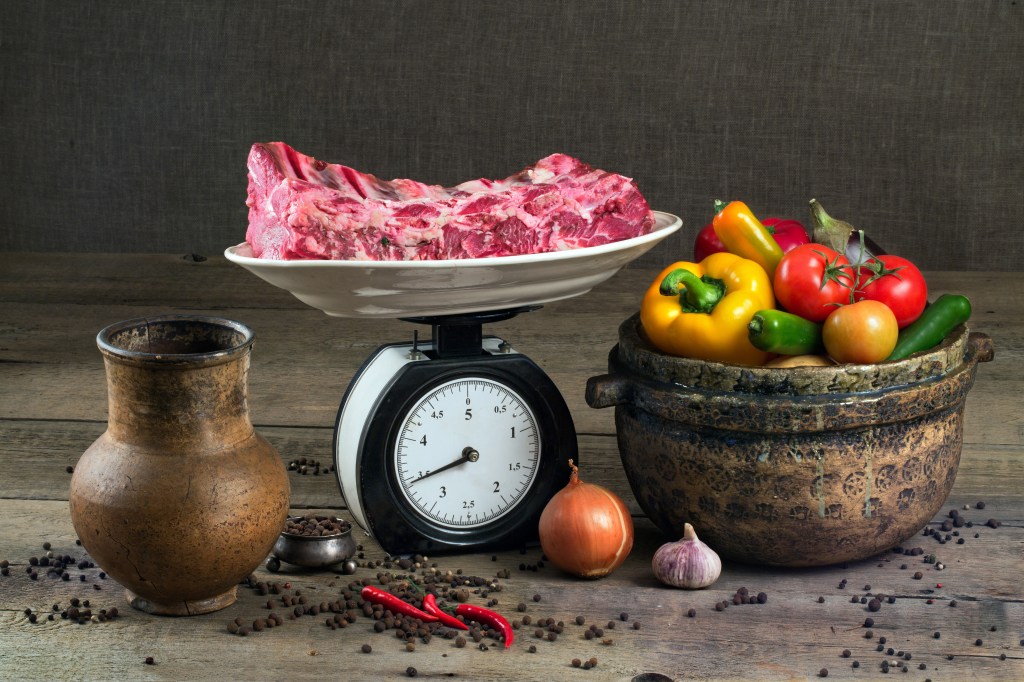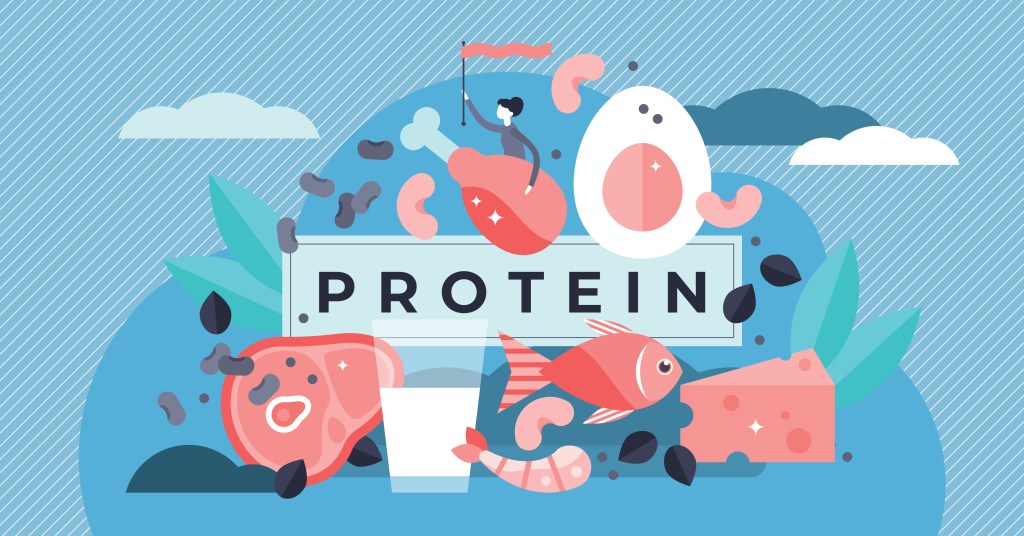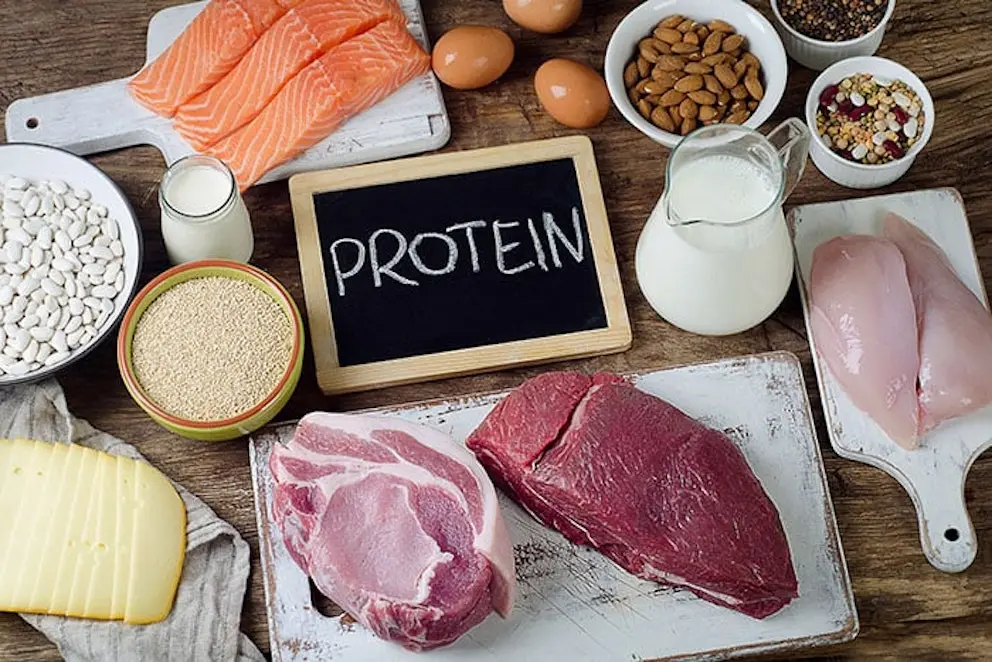At a glance
Protein is a vital macronutrient that supports tissue strength, hormone regulation, and healthy metabolism. Although many foods contain protein, their quality and absorption can vary significantly, making it essential to regularly incorporate high-quality sources.
Protein provides amino acids needed for critical physiological functions such as tissue repair, muscle growth, hormone balance, cellular structure and integrity, and metabolic processes.
While various animal and plant-based foods offer protein, the quality and bioavailability can vary, making some sources more effective at delivering this essential macronutrient than others.
Discover the most nutritious protein-rich foods and find out how much protein you really need to maintain a healthy body.
What is protein?
Protein is an essential macronutrient made up of amino acids, which are also referred to as the building blocks of life.
Amino acids play a critical role in repairing and building tissues, maintaining muscle mass, promoting hormonal balance, and supporting healthy bodily functions.
In addition, amino acids are needed to produce enzymes, which are protein structures that facilitate all chemical reactions in the body. This makes protein an indispensable nutrient for overall health.
There are nine essential amino acids that the body cannot produce on its own, and must be obtained from dietary sources. Foods that offer all of these essential amino acids are called complete proteins, with most sources coming from animal products.
Although there are plenty of plant-based protein sources, very few contain all nine essential amino acids, leaving those following a vegetarian or vegan diet at risk of amino acid deficiency and associated health issues.
Compared to carbohydrates, both protein and healthy fats must be consumed daily as part of a nutritious diet to maintain critical bodily functions.
“A healthy diet must feature adequate amounts of protein from high-quality whole food sources,” explains Dr. Berg. “Lack of protein can lead to significant health issues, including infertility, muscle loss, weakened immune function, and poor overall vitality.”
Watch the video below to find out what protein is best to support a healthy body.
Benefits of protein
While most people recognize protein’s role in supporting muscle tissue, its importance extends far beyond that, contributing to overall health and well-being in various essential ways.
Here are four functions and benefits of protein.
1. Immune system support
Critical immune cells, including T cells, macrophages, neutrophils, and dendritic cells, are formed from amino acids, which must be obtained through dietary proteins.
Research published in Critical Care Medicine highlights that protein malnutrition significantly increases the risk of opportunistic infections and is associated with higher morbidity and mortality rates.1
2. Hormonal balance
Protein-derived hormones such as insulin, growth hormone, and thyroid hormones play a vital role in regulating key physiological processes, including growth and development, energy balance, and immune function.
In addition, the sleep-regulating hormone melatonin, which requires the amino acid tryptophan, is crucial for regulating the body’s circadian rhythm and maintaining healthy sleep cycles.

3. Muscle tissue maintenance
The majority of the body’s protein stores are found in muscle tissue, which accounts for roughly 50 percent of total body protein.
Protein is essential to maintain and repair muscle tissue, as it supports muscle growth, recovery, and overall function. It also helps repair damaged muscle fibers (types of collagen) and promotes the development of new muscle cells, which is particularly important after exercise or physical stress.
This explains why adequate protein intake is critical for individuals involved in strength training, athletes, and anyone seeking to preserve muscle mass as they age.
4. Enzyme production
Enzymes are protein-based structures that act as catalysts in biochemical reactions, facilitating essential processes, including digestion, metabolic pathways, and almost all cellular functions.
Without sufficient protein, the body cannot produce the necessary enzymes to efficiently break down food, absorb nutrients, generate energy, or carry out vital chemical reactions.
Protein deficiency is associated with various health issues, including:
- Muscle wasting
- Poor digestive function
- Liver problems
- Poor detoxification
- Nutrient deficiencies
- Anemia
- Hair loss
- Cognitive impairment
- Hormonal imbalances
- Poor immune function
- Slow wound healing

How much protein do you need?
The ideal protein intake for an individual is greatly influenced by factors such as body composition, health status, activity levels, and dietary goals. This explains why recommendations around protein intake often seem conflicting.
As a general rule, most people require between 3 to 6 ounces (85 to 170 grams) of protein per meal, which equates to a daily intake of approximately 9 to 18 ounces (255 to 510 grams).
For reference, a three-ounce portion is about the size of a deck of cards, while six ounces is roughly the size of two decks stacked together.
However, athletes, active individuals, older adults, and those recovering from major surgery have increased amino acid needs and often benefit from following high-protein diets to support tissue repair and muscle mass maintenance.
In contrast, individuals with poor kidney or liver function should limit protein as these organs are involved in amino acid metabolism and can be overwhelmed by excessive protein intake.

Furthermore, contrary to popular belief, consuming excessive protein can contribute to weight gain, and those aiming to lose weight should enjoy it in moderation.
When eaten in large amounts, protein triggers the release of insulin, a hormone that plays a key role in regulating metabolic processes. While insulin is essential for various bodily functions, it also promotes fat storage and inhibits fat burning, hindering weight loss efforts.
A study published in Clinical Nutrition investigated the effects of a high-protein diet on body composition and concluded: “Higher dietary protein intake is associated with long-term increased risk of body weight gain and overall death in a population at high cardiovascular risk.”2
Frik’s incredible weight loss journey with moderating protein
Despite regular exercise and following a carnivore diet, Frik’s weight didn’t budge until he discovered Dr. Berg’s videos. Inspired by his insights, Frik switched to a low-carb diet focused on nutrient-dense whole foods and adjusted his protein intake.
He shares:
“I was figuring out what is best for me and found that the high fiber content of raw vegetables and fewer proteins work for me. I’ve also implemented intermittent fasting and lost 100 pounds.”
Frik’s story is a powerful testament to the impact of tuning into your body and adopting a nourishing diet–not only for weight loss but also for reigniting vitality.
Results may vary based on individual factors such as starting point, goals, and personal effort. A holistic approach, including proper nutrition and lifestyle changes, is essential for achieving and maintaining health improvements. Individual outcomes aren’t guaranteed.

Best natural sources of protein
Consuming high-quality protein from whole food sources is crucial to meet the body’s amino acid requirements and support overall health and wellness.
Not only do these foods provide protein, but they also offer other nutrients including healthy fats, vitamins, and minerals, all of which are crucial for maintaining optimal physical functions.
Some of the most nutritious animal proteins include:
- Eggs
- Grass-fed beef
- Pork
- Lamb
- Venison
- Poultry
- Organ meat
- White and fatty fish
- Shellfish
- Full-fat dairy products
In addition, protein can also be obtained from certain plant foods, including:
- Tofu
- Tempeh
- Edamame
- Chickpeas
- Peas
- Chia seeds
- Hemp seeds
- Sunflower seeds
- Pumpkin seeds
- Nuts
Plant foods such as lentils, black beans, and quinoa are also valued for their high protein content.
However, these foods are high in carbohydrates, which can contribute to blood sugar fluctuation and metabolic imbalances. This makes these protein sources unsuitable for those with poor metabolic health and individuals following a low-carb ketogenic diet.
In addition, research published in The American Journal of Clinical Nutrition found that animal protein is significantly more effective than plant proteins in stimulating muscle protein synthesis.3
This suggests that animal-based protein options are superior, particularly for individuals seeking to optimize muscle protein synthesis and overall metabolic function.

Worst sources of protein
As more consumers seek convenient protein sources to support muscle growth or adhere to vegan and vegetarian diets, the food industry has responded with various high-protein products.
Unfortunately, many of these options are ultra-processed and contain artificial flavoring, preservatives, and stabilizers to recreate the texture, look, and taste of natural proteins.
Some of the worst protein sources include soy-based meat alternatives (SBMAs), also known as textured vegetable proteins (TVP), commonly found in processed meat substitutes such as vegan burgers, sausages, and other plant-based protein products.
In addition to containing potentially harmful ingredients, many of these products are made with genetically modified (GMO) soy or corn, which have been linked to potential health concerns.
According to evidence published in Critical Reviews in Food Science and Nutrition, long-term intake of GMO crops has been linked to an increased risk of kidney and liver problems, poor immune functions, and reproductive issues.4
While they may seem convenient, protein powders and protein bars typically contain added sugars, artificial ingredients, and in some cases unhealthy seed oils. This makes these products less than ideal options for long-term health.
Key takeaways
- Protein is a crucial macronutrient for building and repairing tissues, producing enzymes and hormones, supporting immune function, and maintaining muscle mass.
- Most people need about 3 to 6 ounces of protein per meal, depending on body size, activity level, and overall health.
- High-quality animal proteins such as eggs, meat, fish, and dairy provide all nine essential amino acids and are more bioavailable than plant sources.
- Plant-based proteins can be beneficial but may lack certain amino acids and are often higher in carbohydrates.
- Highly processed protein powders, bars, and soy-based meat alternatives may contain additives and unhealthy oils that reduce nutritional quality.
FAQ
1. What food is the highest in protein?
Some of the best high-protein foods include animal products such as red meat, poultry, organ meats, eggs, fish, seafood, and dairy.
Compared to plant-based protein sources, animal products are considered complete proteins as they provide all nine essential amino acids crucial for supporting critical bodily functions.
2. Do two eggs a day provide enough protein?
Two eggs provide about 0.5 ounces (14 grams) of protein, which isn’t enough to meet the protein needs of most people.
3. Are protein bars healthy?
Most protein bars are ultra-processed food products that contain added sugars, artificial ingredients, and unhealthy seed oils, making them less nutritious than whole-food protein sources.
4. How much protein do you need each day?
Ideal protein intake depends on factors such as body composition, health status, activity levels, and dietary goals.
Most people require 3 to 6 ounces (85 to 170 grams) of protein per meal. This equates to a daily intake of approximately 9 to 18 ounces (255 to 510 grams) of protein.
5. Can too much protein cause weight gain?
Yes, excessive protein intake can lead to weight gain as it stimulates the release of insulin, a metabolic hormone that encourages fat storage and inhibits fat burning.
Sources
- https://pubmed.ncbi.nlm.nih.gov/2105184/ ?
- https://www.sciencedirect.com/science/article/abs/pii/S0261561415000916 ?
- https://www.sciencedirect.com/science/article/pii/S0002916524007275 ?
- https://pubmed.ncbi.nlm.nih.gov/18989835/ ?


















